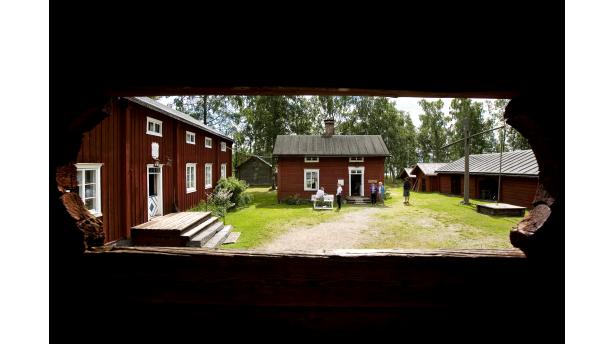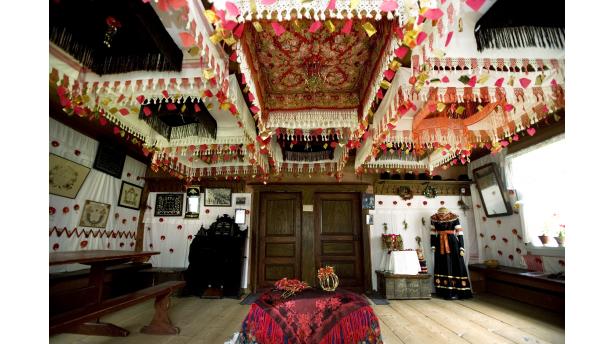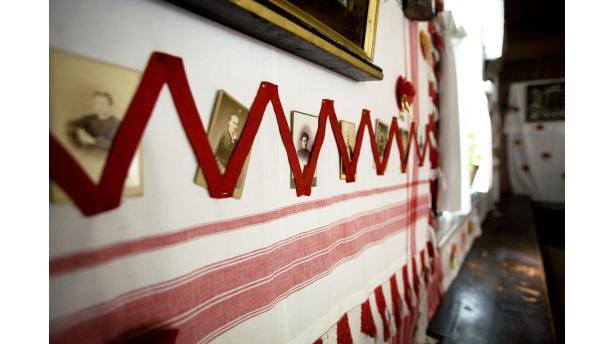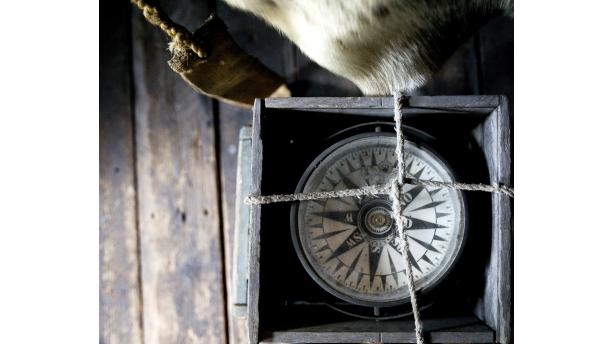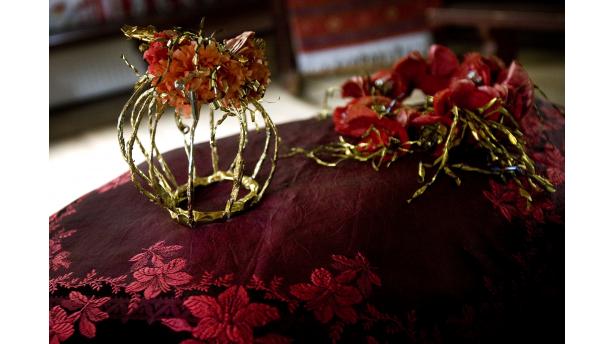Museum A-Ö » Brage Open-Air Museum
Brage Open-Air Museum
- Rural life and craft
- Nature and garden
- The archipelago, fishing and seafaring
- For children and the childlike





Did you know...
Textiles tell about the wealth of an estate: the more and the more colourful, the wealthier the master. In the museum barn can be seen a girls’ garment loft with its colourful textiles.
In the Brage Open-Air Museum the visitor is greeted by a courtyard with the red ochre paint buildings surrounding it, the peaceful cackle of the hens and the authentic, atmospheric Ostrobothnian peasant milieu. In the barn can be found various colourful textiles, and the quaint wedding chamber of the main building is a must-see.
When arriving in Brage the visitor steps into a peasant house typical for southern Ostrobothnia in the 19th century. There are namely nine buildings moved from the Harf estate in Närpes in the area. The main building is from the beginning of the 19th century, and according to a saying from the 1920s it was “the most beautiful peasant house between Närpes and Vaasa”. In addition to it a row of stables, a windmill, a smithy, a sheep barn and a piggery were transported from the Harf estate. The houses were moved to Vaasa during the 1920s and 1930s when the Föreningen Brage (Brage Association) started its museum activity. When Brage was being built, its exemplars were Skansen in Stockholm and Seurasaari in Helsinki. The objective was an Ostrobothnian farm with all its buildings.One of the pearls of the museum is the Ostrobothnian wedding chamber, which has been furnished and decorated in a way typical for the Lappfjärd region. The walls are embellished with “fransu” sheets, mirrors, sconces, paper flowers and photographs. There are twelve bridal heavens made of “fransu” sheets and silk scarves hanging from the ceiling. On display are also bridal coverlets with the crown and garland – everything is ready for a peasant wedding of the 1890s.
A typical coastal region peasant milieu is shown at the museum, and therefore there are also buildings that represent fishing in the area. Fishing was an important source of livelihood for the population of the archipelago. There are 24 buildings in all in the museum area, and among them are a coast barn, a boat house, a fish sauna and a seal hunting museum. On display in the seal hunting museum is a seal boat with its equipment as well as plenty of photographs illustrating sealing on the spring ice of the Kvarken. There is also an archive and a library for those who wish to know more about peasant life.
The museum is an excellent excursion object for children, school classes and kindergarten groups. A children’s day is arranged once a year, and children are then allowed to try out walking on stilts and old time games. Various theme time travels and children’s parties are arranged upon request. It is also possible to hike on a trail in the nature and learn to understand nature’s own pantry – how plants and trees were utilized in the old times.
Among the annual events of the museum are winter vacation days, the Brage May Day festival, the Children’s Day, the harvest fair, the crowning of the Lucia maid and the Lucia procession through Vaasa, when one can also dance around the Christmas tree at the town hall.
Photo exhibition "The forest of visible birds" (Johan Geisor) until 11.8.2024
